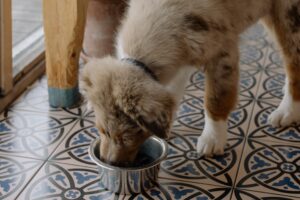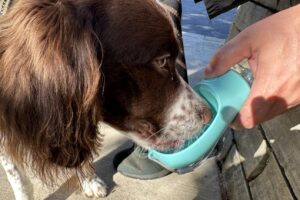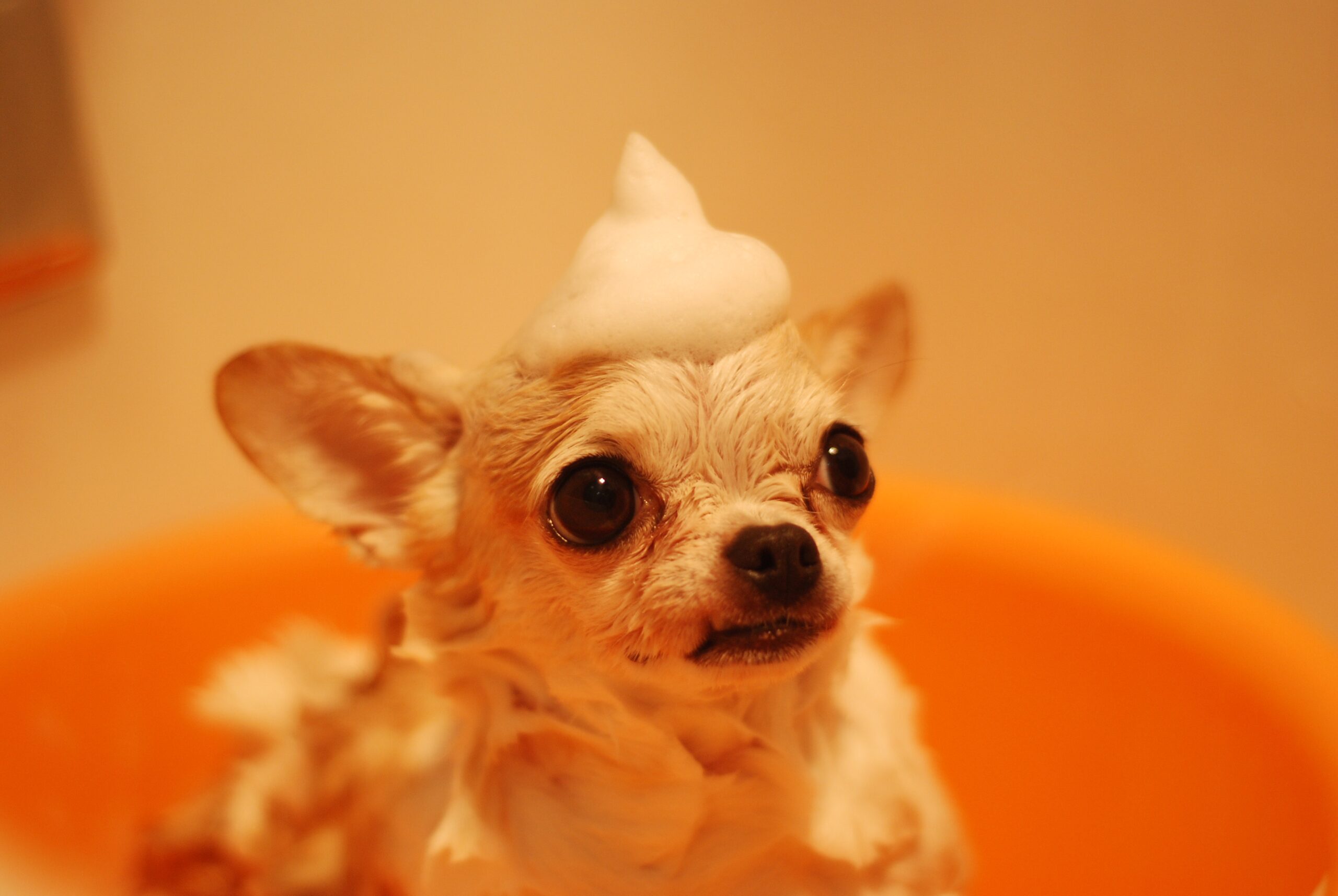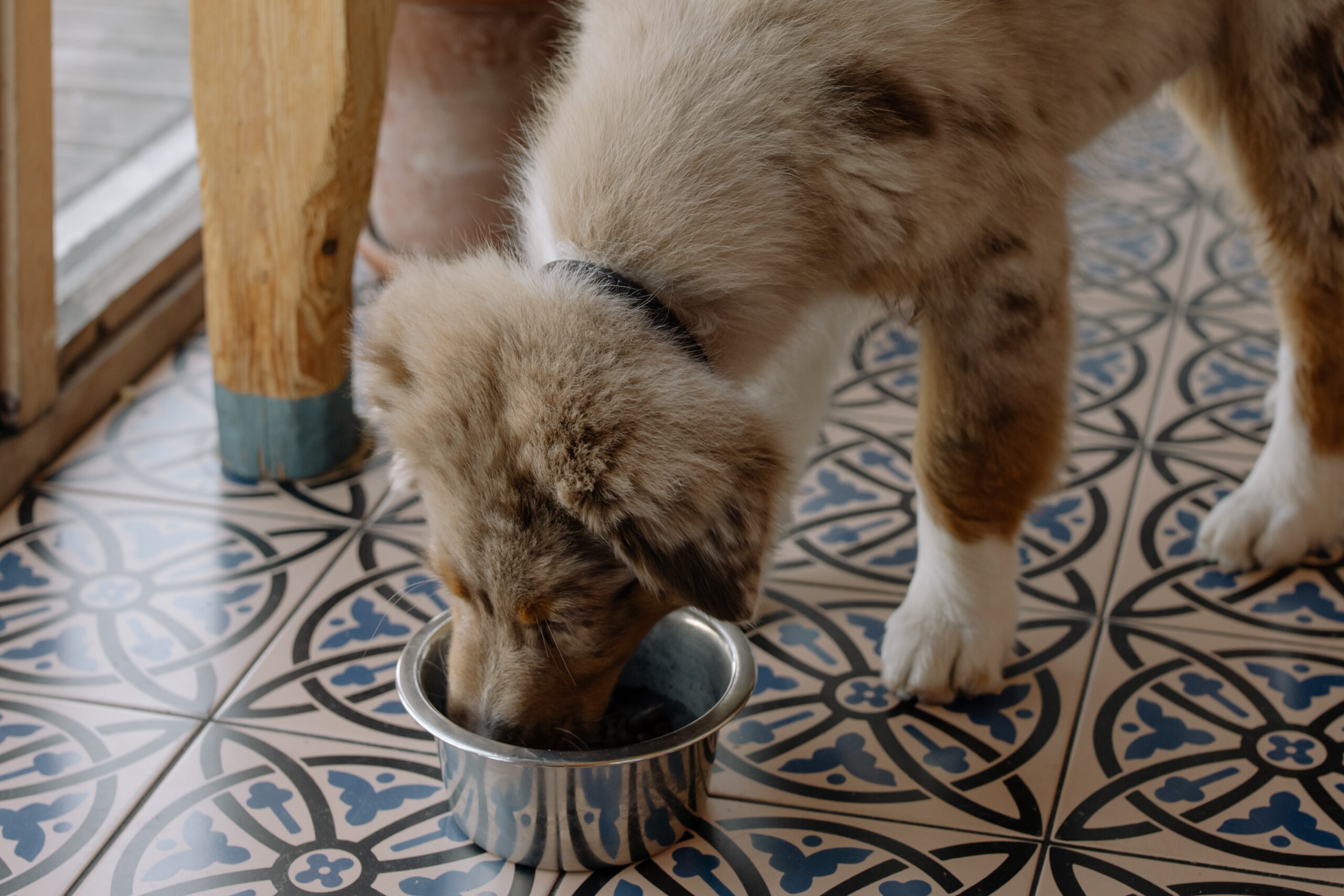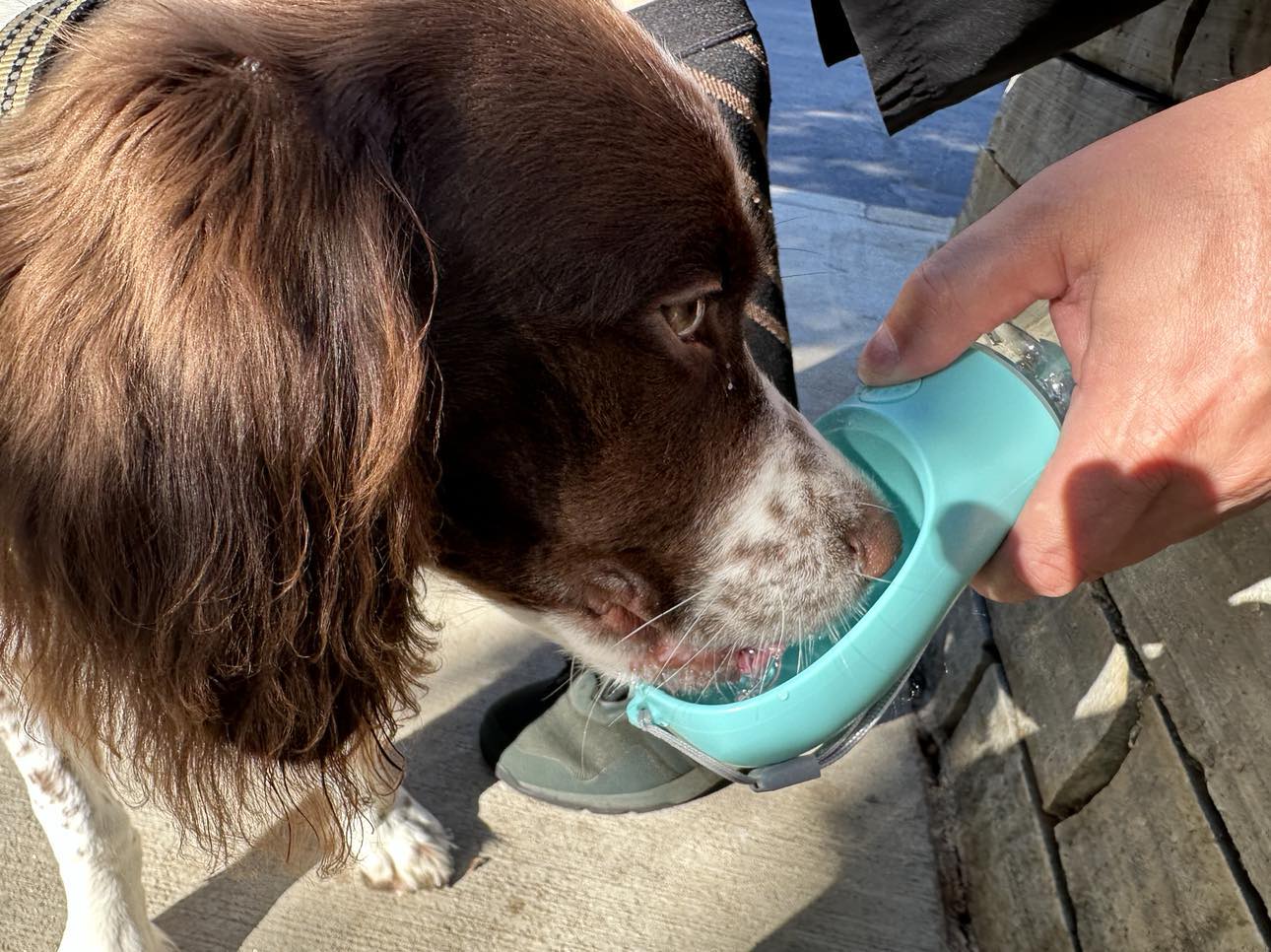Bringing a new puppy into your home is an exciting and heartwarming experience. As a responsible pet owner, it’s essential to ensure that your furry friend receives proper care and attention from the very beginning. One vital aspect of puppy care is maintaining their hygiene, and a crucial component of that is regular bathing. In this guide, we’ll delve into the importance of giving your puppy baths, how to establish a positive bathing routine, and the key steps to create a safe and comfortable environment for this essential grooming activity.
Puppies are naturally curious and full of boundless energy, which often leads them into various playful and exploratory adventures. However, these escapades can leave them covered in dirt, mud, or other unpleasant substances. Regular puppy baths serve as a fundamental practice in maintaining their cleanliness and overall health.
Beyond just keeping your pup looking and smelling fresh, bathing also contributes to their well-being in several ways. Bathing helps prevent the accumulation of dirt, debris, and potential allergens that could lead to skin irritations or infections. Additionally, proper hygiene reduces the risk of flea and tick infestations, which can be especially problematic for young and developing puppies.
Just like any other aspect of pet care, establishing a positive routine early on can set the tone for a lifetime of comfortable and stress-free bathing experiences. Introducing your puppy to the concept of baths in a positive and gradual manner can help alleviate any potential fear or anxiety they might associate with water or grooming activities.
By incorporating regular baths into your puppy’s routine, you not only ensure their physical cleanliness but also create an opportunity for bonding. Through gentle touch, soothing words, and positive reinforcement, you can build a stronger connection with your puppy, making bath time an enjoyable activity for both of you.
Creating a conducive environment is paramount to a successful and enjoyable bathing experience for your puppy. Before you even begin the bathing process, consider the following factors:
- Location: Choose a warm and draft-free area for the bath. A sink or a shallow tub can be ideal for small puppies, while larger breeds might require a bathtub or a designated space.
- Supplies: Gather all the necessary supplies before you start, including puppy-safe shampoo, towels, a non-slip mat, a brush, treats, and toys. Having everything within arm’s reach will help streamline the process.
- Water Temperature: Ensure the water temperature is lukewarm and comfortable for your puppy. Test it with your wrist or elbow to prevent any accidental burns.
- Preparation: Brush your puppy’s coat before the bath to remove tangles and mats. This not only makes the bathing process smoother but also prevents further tangling of wet fur.
By carefully considering these aspects and creating a safe, welcoming environment, you set the stage for a positive and enjoyable bathing experience that will benefit both you and your beloved puppy. In the following sections, we will guide you through each step of the bathing process, ensuring a seamless and rewarding journey into puppy grooming.
Preparing for the Bath
Gathering Necessary Supplies
Before embarking on your puppy’s bath time adventure, it’s crucial to have all the essential supplies at the ready. This ensures a smooth and stress-free experience for both you and your furry friend. Here’s a comprehensive list of items you’ll need:
- Puppy-Safe Shampoo: Opt for a mild and specifically formulated puppy shampoo. Human shampoos can be harsh on a puppy’s sensitive skin and may lead to irritation.
- Towels: Have a few soft, absorbent towels on hand for drying your puppy after the bath. Choose towels that are gentle on their skin and offer ample coverage.
- Non-Slip Mat: Placing a non-slip mat in the bathing area provides stability for your puppy and helps prevent accidents caused by slippery surfaces.
- Brush: Use a suitable brush for your puppy’s coat type. Brushing before the bath helps remove tangles and mats, making the bathing process more effective.
- Treats and Toys: Having treats and toys nearby can help distract and reward your puppy throughout the bath, turning it into a positive and enjoyable experience.
Choosing the Right Bathing Location
Selecting the appropriate bathing location plays a pivotal role in ensuring your puppy’s comfort and safety during bath time. Consider the following factors:
- Size and Accessibility: If you have a small or toy breed, a sink or a shallow tub may be the perfect fit. Larger breeds might require a bathtub or a designated bathing area with enough space for them to move comfortably.
- Safety: Choose an area where your puppy won’t slip or fall easily. Placing a non-slip mat in the bathing area provides extra stability and reduces the risk of accidents.
- Easy Cleanup: Opt for a location that is easy to clean in case of splashes or water spills. Bathing outdoors during warm weather can also be a fun option.
Setting the Water Temperature
Proper water temperature is crucial for a comfortable and safe bathing experience. Puppies, like human babies, are sensitive to temperature changes. Follow these guidelines for setting the water temperature:
- Lukewarm Water: The water should be lukewarm, around 100-102°F (37.8-38.9°C). Test the water with your wrist or elbow to ensure it’s not too hot or too cold.
- Adjust Gradually: Start with slightly cooler water and gradually adjust the temperature to find what your puppy is most comfortable with.
- Use a Thermometer (Optional): If you’re unsure about the water temperature, you can use a bath thermometer to ensure accuracy.
- Prevent Startling: Avoid sudden changes in water temperature or pressure, as these can startle your puppy and create a negative association with bath time.
By gathering the necessary supplies, choosing an appropriate bathing location, and setting the water temperature just right, you’re laying the foundation for a successful and enjoyable bathing experience. In the next section, we’ll guide you through each step of the bathing process, from introducing your puppy to the bath area to ensuring a thorough rinse, ensuring both you and your puppy feel confident and at ease throughout the entire process.
Step-by-Step Bathing Process
Bathing your puppy is an opportunity for bonding and ensuring their well-being. A systematic and gentle approach will make the experience positive and enjoyable for both you and your furry companion. Follow these steps to ensure a successful bathing session:
Brushing and Prepping
- Removing Tangles and Mats: Before the bath, give your puppy’s coat a thorough brushing. This step helps remove tangles and mats, making the bathing process more effective and preventing further tangling when wet.
- Ensuring a Clean Coat: A clean coat allows the shampoo to work better. If your puppy has rolled in dirt or mud, gently wipe away the excess with a damp cloth before the bath.
Introducing Your Puppy to the Bath Area
- Letting Them Explore the Space: Before you start the bath, allow your puppy to explore the bathing area. This helps them become familiar with the surroundings and reduces potential anxiety.
- Offering Treats and Positive Reinforcement: Encourage your puppy to associate the bath area with positive experiences by giving them treats and using cheerful, reassuring tones. Place treats near the bath and let them approach voluntarily.
Gently Introducing Water
- Using a Handheld Showerhead or Cup: Introduce water gradually to prevent startling your puppy. Use a handheld showerhead or a cup to wet their body gently. Start from the back and work your way to the head, avoiding the face.
- Gradually Wetting the Puppy’s Body: Take your time as you wet your puppy’s body. If they show signs of nervousness, pause and offer treats to reinforce positive behavior.
Applying Shampoo
- Choosing a Mild, Puppy-Specific Shampoo: Select a shampoo specifically designed for puppies. Regular dog shampoos might contain harsh chemicals that could irritate their sensitive skin.
- Avoiding Sensitive Areas: Be cautious when shampooing around sensitive areas like the eyes, ears, and mouth. Use a washcloth or sponge to clean these areas gently.
Massaging and Cleaning
- Gentle Massage to Distribute Shampoo: While applying shampoo, use gentle massaging motions to distribute it through your puppy’s coat. This helps clean the fur thoroughly and promotes relaxation.
- Cleaning Paws, Underbelly, and Tail: Pay extra attention to cleaning the paws, underbelly, and tail, as these areas can accumulate dirt. Use your fingers to gently massage and clean these areas.
Rinsing Thoroughly
- Ensuring No Shampoo Residue: Thoroughly rinse your puppy’s coat to ensure no shampoo residue remains. Leftover shampoo can lead to skin irritations.
- Calmly Rinsing with Lukewarm Water: Use lukewarm water to rinse your puppy’s coat, starting from the head and working your way down. Keep the water pressure gentle to avoid causing stress.
Following these steps will help you create a positive and successful bathing experience for your puppy. Remember to stay patient, use positive reinforcement, and maintain a calm demeanor throughout the process. In the next section, we’ll explore the post-bath care, including drying, brushing, and rewarding your puppy for their cooperation.
Drying and Post-Bath Care
After a refreshing bath, it’s important to properly dry your puppy and provide the necessary post-bath care to ensure their comfort and well-being. This stage of the process is just as crucial as the bath itself in maintaining a positive experience for your furry friend.
Towel Drying
- Blotting Excess Water: Gently use a soft towel to blot and absorb excess water from your puppy’s coat. Avoid rubbing vigorously, as this can tangle the fur and irritate the skin.
- Keeping Your Puppy Warm and Comfortable: Once you’ve blotted most of the water, wrap your puppy in a dry, warm towel. This helps keep them cozy and prevents them from getting chilled after the bath.
Using a Hairdryer (Optional)
- Choosing a Low Heat Setting: If you choose to use a hairdryer, ensure it’s set on a low heat setting. High heat can be uncomfortable for your puppy and may cause overheating.
- Keeping a Safe Distance and Monitoring Comfort: Hold the dryer at a safe distance from your puppy’s fur to avoid any discomfort or burns. Keep a close eye on your puppy’s reactions, and if they seem stressed or uncomfortable, consider skipping the dryer.
Brushing After the Bath
- Preventing Tangles and Matting: Once your puppy is mostly dry, gently brush their coat using a suitable brush for their specific fur type. This step helps prevent tangles and matting, ensuring a healthy and well-maintained coat.
- Maintaining a Healthy Coat: Regular post-bath brushing not only prevents tangles but also distributes natural oils through the fur, promoting a healthy and shiny coat.
Rewarding Your Puppy
- Praising and Treating for Good Behavior: Throughout the bath and drying process, offer verbal praise and treats to reinforce your puppy’s positive behavior. This helps them associate bath time with positive experiences.
- Building Positive Associations with Bathing: Make sure to create a positive environment during post-bath care as well. Engage in play, cuddles, and more treats to solidify the notion that bath time is a rewarding and enjoyable activity.
By diligently following these post-bath care steps, you’ll not only ensure your puppy’s physical well-being but also contribute to their emotional comfort and positive outlook on bath time. The next section will delve into strategies for overcoming bathing challenges, such as fear, water aversion, and special health considerations, ensuring that you’re well-equipped to handle any situation that may arise.
Overcoming Bathing Challenges
While many puppies take naturally to baths, some may face challenges or exhibit resistance due to fear, anxiety, or specific health concerns. It’s important to approach these situations with patience, understanding, and appropriate strategies to ensure a positive bathing experience.
Handling Fear and Anxiety
- Gradual Desensitization: For puppies that are fearful or anxious about baths, gradual exposure can make a significant difference. Start by letting your puppy explore the bathing area without water, rewarding them for their calm behavior. Gradually introduce water in small increments over multiple sessions, allowing your puppy to adjust at their own pace.
- Using Calming Techniques and Tools: Calming techniques, such as playing soft music or using lavender-scented products, can create a soothing environment. Additionally, consider using a pheromone diffuser designed to reduce anxiety in dogs.
Dealing with Water Aversion
- Slowly Introducing Water Through Play: If your puppy is averse to water, introduce water in a positive and playful manner outside of bath time. Use a kiddie pool or a shallow basin filled with a small amount of water and let your puppy explore, rewarding them with treats and praise.
- Patience and Positive Reinforcement: Be patient and offer plenty of positive reinforcement when your puppy displays tolerance or curiosity around water. Gradually increase the water level as your puppy becomes more comfortable.
Handling Puppies with Health Concerns
- Consulting a Veterinarian for Guidance: If your puppy has health concerns, such as allergies, skin conditions, or other medical issues, consult your veterinarian before giving them a bath. They can provide guidance on suitable bathing products and frequency based on your puppy’s specific needs.
- Special Considerations for Sensitive Puppies: Sensitive puppies may require extra care and attention during baths. Use a gentle touch, avoid harsh scrubbing, and opt for hypoallergenic or medicated shampoos if recommended by your vet.
Remember, every puppy is unique, and their reactions to baths may vary. The key is to approach challenges with empathy, create a positive and gradual introduction to the bathing process, and adapt your approach based on your puppy’s comfort level. In the next section, we’ll explore the importance of maintaining a bathing schedule and tailoring it to your puppy’s individual needs to ensure their hygiene and well-being.
Maintaining a Bathing Schedule
Establishing a consistent bathing schedule is essential for keeping your puppy clean and healthy. However, determining the right frequency and adapting the schedule to your puppy’s unique requirements are equally important factors to consider. Here’s how you can effectively manage your puppy’s bathing routine:
Frequency of Baths
- Age and Activity Level: Young puppies tend to get dirty more quickly due to their playful nature and exploration. As a general guideline, you can start with bathing your puppy once every 3-4 weeks. However, be cautious not to over-bathe, as frequent baths can strip their skin of natural oils.
- Outdoor Adventures: If your puppy frequently plays outdoors or gets into messy situations, you may need to bathe them more often. After muddy romps or swimming sessions, a prompt bath might be necessary to prevent skin issues.
Tailoring the Schedule to Your Puppy’s Needs
- Breed and Coat Type: Different breeds have varying coat types that require different levels of care. Long-haired breeds might need more frequent baths to prevent matting, while short-haired breeds may require fewer baths.
- Skin Sensitivity: Puppies with sensitive skin or allergies might benefit from less frequent baths and the use of hypoallergenic shampoos. Consult your veterinarian for guidance on the best approach.
- Consulting a Groomer: If you’re unsure about the ideal bathing frequency or specific grooming needs for your puppy, consider seeking advice from a professional groomer. They can provide personalized recommendations based on your puppy’s breed and individual characteristics.
Monitoring Coat and Skin Health
- Inspecting for Issues: Regularly examine your puppy’s coat and skin for any signs of irritation, dryness, or unusual odors. If you notice any changes, consult your veterinarian before making adjustments to the bathing schedule.
- Brushing Between Baths: In addition to baths, routine brushing helps keep your puppy’s coat clean and healthy by removing loose fur, dirt, and debris. Brushing can also stimulate blood circulation and distribute natural oils.
By tailoring the bathing schedule to your puppy’s specific needs and closely monitoring their coat and skin health, you’ll be able to strike a balance between maintaining hygiene and promoting their overall well-being. As your puppy grows and develops, continue to adapt the bathing routine to ensure it remains a positive and beneficial experience for both you and your furry friend.
In the concluding section, we’ll recap the key points covered in this guide and emphasize the importance of building a strong bond through grooming practices. Additionally, we’ll provide you with additional resources to further enhance your knowledge and skills in caring for your puppy’s grooming needs.
Conclusion
Bringing a puppy into your life opens the door to a world of joy, companionship, and responsibility. Among the many aspects of caring for your furry friend, grooming, and specifically bathing, play a significant role in their well-being. As you embark on this journey of puppy care, remember the key takeaways from this guide:
Emphasizing the Importance of Positive Experiences: Creating a positive association with bathing is essential for fostering a lifetime of stress-free grooming. By introducing your puppy to the bath gradually, using treats, toys, and calming techniques, you’re setting the stage for a positive bathing routine that will benefit their physical and emotional health.
Building a Strong Bond Through Grooming: Bathing is more than just a hygiene routine; it’s an opportunity to strengthen the bond between you and your puppy. Gentle touches, soothing words, and rewarding interactions during and after the bath build trust and deepen your connection.
Encouraging Responsible and Caring Puppy Care: Taking care of a puppy goes beyond providing food and shelter. By maintaining their hygiene, you’re promoting their overall health and preventing potential issues. A well-groomed and happy puppy is a reflection of responsible and caring pet ownership.
As your puppy grows and matures, your understanding of their individual needs will evolve. Each puppy is unique, and adapting your bathing routine to suit their characteristics will ensure their comfort and happiness. Remember, patience, empathy, and positive reinforcement are your greatest allies in overcoming challenges and ensuring a positive grooming experience.
By following the steps outlined in this guide and tailoring them to your puppy’s specific requirements, you’re embarking on a journey of companionship and care that will enrich both your lives. Here’s to many enjoyable and bonding-filled bath times ahead!

